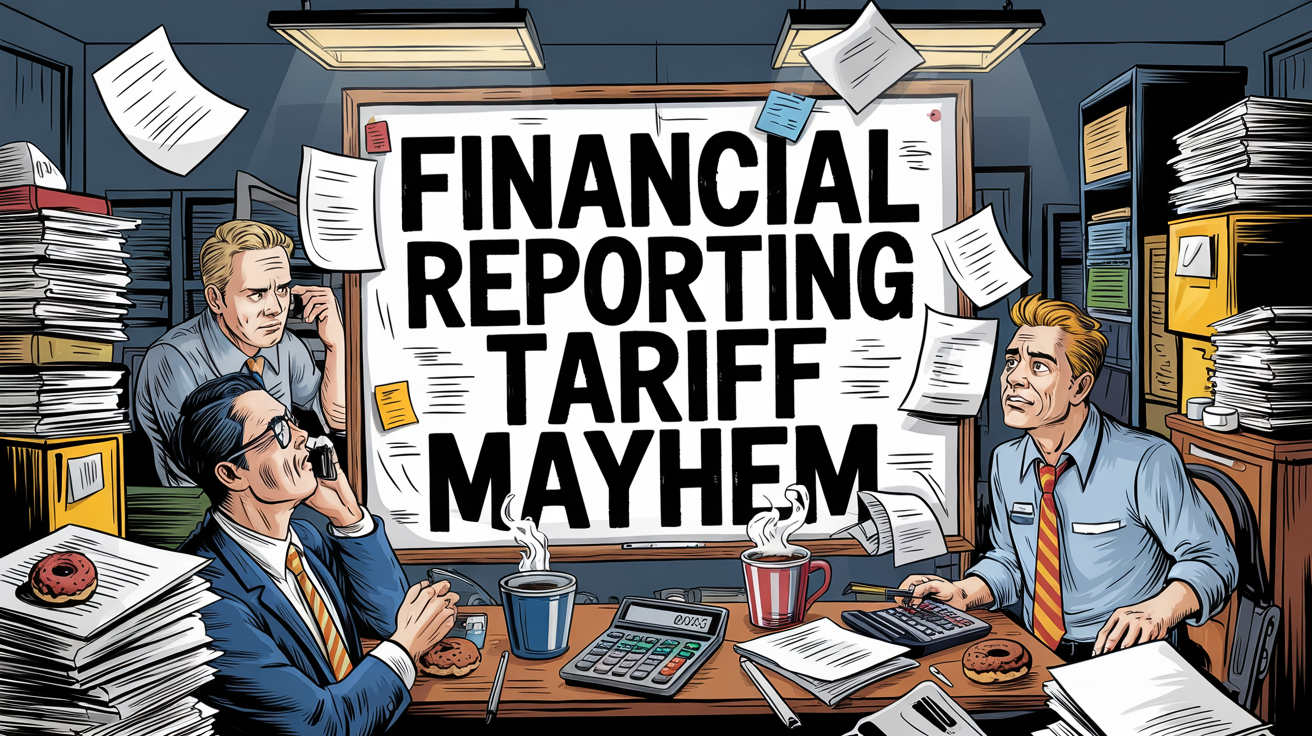Tariff changes across the globe
The Trump Administration’s 2025 tariffs have intensified the operational and reporting challenges faced by multinational corporations, particularly those managing multi-currency transactions, divergent accounting standards, fragmented ERP systems, and evolving data residency laws. Below is an expanded analysis of how these interconnected issues disrupt financial consolidation and reporting processes:
Multi-Currency Consolidation Amid Tariff-Driven Volatility
Exchange Rate Distortions and Translation Risks
Tariffs can make currency values swing more than usual, as financial markets react to new trade rules. For example, when the U.S. dollar lost 6% of its value against the euro in early 2025, it made the reported income from overseas branches (like those in Mexico) look higher when converted back to dollars-even though actual profits might have fallen due to local currency weakness.
This creates two main challenges for finance teams:
- Currency Reporting Gaps: When foreign branches report earnings in their local (weaker) currency, it can make the parent company’s financial results look artificially better. Adjustments are needed to show the real profit picture.
Hedging Problems: Tools that companies use to protect against currency swings (like hedging contracts) may not work as well after tariffs change the market, making it harder to follow accounting rules and manage risks.
Transfer Pricing and Customs Conflicts
When companies do business between their own branches in different countries, tariffs make these deals more complicated. For instance, if a Chinese branch sells parts to a U.S. branch at old prices, but tariffs have changed, U.S. tax authorities might question the fairness of those prices-especially if profits in the U.S. drop.
Adjusting prices at year-end requires detailed paperwork to keep both tax and customs officials satisfied, which can slow down the process of putting together company-wide financial statements.
Multi-GAAP Reconciliation Under Tariff Pressures
- Different Rules for Valuing Assets: Tariffs can force companies to write down the value of things like inventory differently under U.S. and international accounting rules. For example, a 25% tariff on steel could mean bigger losses under international rules than under U.S. rules, causing mismatches when merging financial results from different countries.
- Revenue Recognition Differences: U.S. and international accounting standards handle tariff impacts on sales differently. For instance, international rules may require losses from tariffs to be recognized sooner than U.S. rules, leading to timing differences in reported revenue and profits.
Data Residency and Regulatory Fragmentation
- Local vs. Central Data Storage: Tariffs often push companies to move manufacturing back home, which means they have to store data locally at new sites. This makes it harder to use centralized, cloud-based tools for financial reporting.
- Conflicting Laws: Different countries have different rules about where and how company data can be stored and shared, making it tough to analyze costs and comply with all regulations.
- Audit Trail Gaps: Using different software systems in different countries can lead to inconsistent ways of tracking tariffs and taxes, increasing the risk of errors in company-wide reports.
Language and Translation Risks in Global Disclosures
- Regulatory Word Confusion: Important legal terms can lose their exact meaning when translated, which can mislead investors about tariff risks.
- Manual Errors: Language barriers and different accounting systems increase the chance of mistakes when adjusting for tariffs, as shown by a 22% higher error rate in companies using multiple systems.

Strategic Solutions for Unified Reporting
- Centralized Tariff Management: Automated platforms can help classify tariffs, adjust for different accounting rules, and convert currencies in real time, reducing manual mistakes.
- Blockchain Audit Trails: Using blockchain can create unchangeable records of tariff allocations, making audits and reconciliations easier.
- Dynamic Scenario Modeling: Companies can test the impact of large tariff increases across multiple currencies and accounting standards to spot risks early.
- Cross-Functional Governance: Bringing together tax, IT, and supply chain teams-and using unified, secure data systems-helps ensure consistent reporting and compliance across the company.
In short, tariffs introduce many new challenges for global companies, from currency swings to complicated tax and customs rules, data management headaches, and translation risks.
Companies need better systems and teamwork to keep their financial reporting accurate and reliable in this environment.
Being one step ahead
The Trump Administration’s tariffs have transformed financial consolidation into a labyrinth of currency swings, regulatory contradictions, and system silos. Companies leveraging Reporting and Consolidation-Powered-driven tools and agile frameworks to unify tariff management will not only mitigate compliance risks but also uncover strategic advantages in supplier diversification and cost arbitrage.
Conversely, firms clinging to manual processes risk eroding stakeholder trust through delayed disclosures and consolidation inaccuracies. In this era of trade policy volatility, the ability to harmonize multi-faceted reporting challenges is no longer optional-it’s a competitive imperative.

@mondial

Your next steps...
💡Click here to ensure data residency, compliance and reduce time spent on period-end reporting.
🔋Click here if you wish to solve 25+ Spreadsheet reporting issues without losing the spreadsheets.
🔆 Click here to improve the accuracy and usability of generated financial reports.
💯 Click here to decrease risk by providing on-demand access to the transaction detail behind every reported balance
☎️ Book a free, no-obligation walkthrough with Mondial to see how we can help you in financial reporting and consolidations just like one of our successful clients.






